Working Without a Plan
The more intentional and deliberate your diversity hiring plan is, the better your chances of increasing workforce diversity. Concrete processes, oversight, and metrics provide a sense of direction and accountability for your diversity hiring efforts, and tangible metrics enable you to track your progress over time. By setting goals that are specific, actionable, and measurable, you increase the likelihood that your diversity hiring plan will create an impact.
However, half of those who completed the assessment reported that they don’t have a process for setting diversity hiring goals. All participants working in the Agriculture, Chemicals, and Machinery industries reported having no defined strategies or processes for setting or achieving diversity hiring goals.
Companies in Europe and North America are less likely to have strategies and processes in place for setting diversity hiring goals than their peers in South/Latin America, Asia and Pacific, and Africa. The European region consists of several markets, and some don’t react as quickly on issues of diversity and inclusion as others do. The connection between awareness and action can vary dramatically, says Robert Symons, Senior Vice President of Europe, Middle East, and Africa at SmartRecruiters. Symons specifically notes that issues in diversity and inclusion can be polarizing in North America. Company politics and bureaucracy could stifle progress toward a solid plan.
Does your company have defined strategies and processes on setting and calibrating your diversity hiring goals?

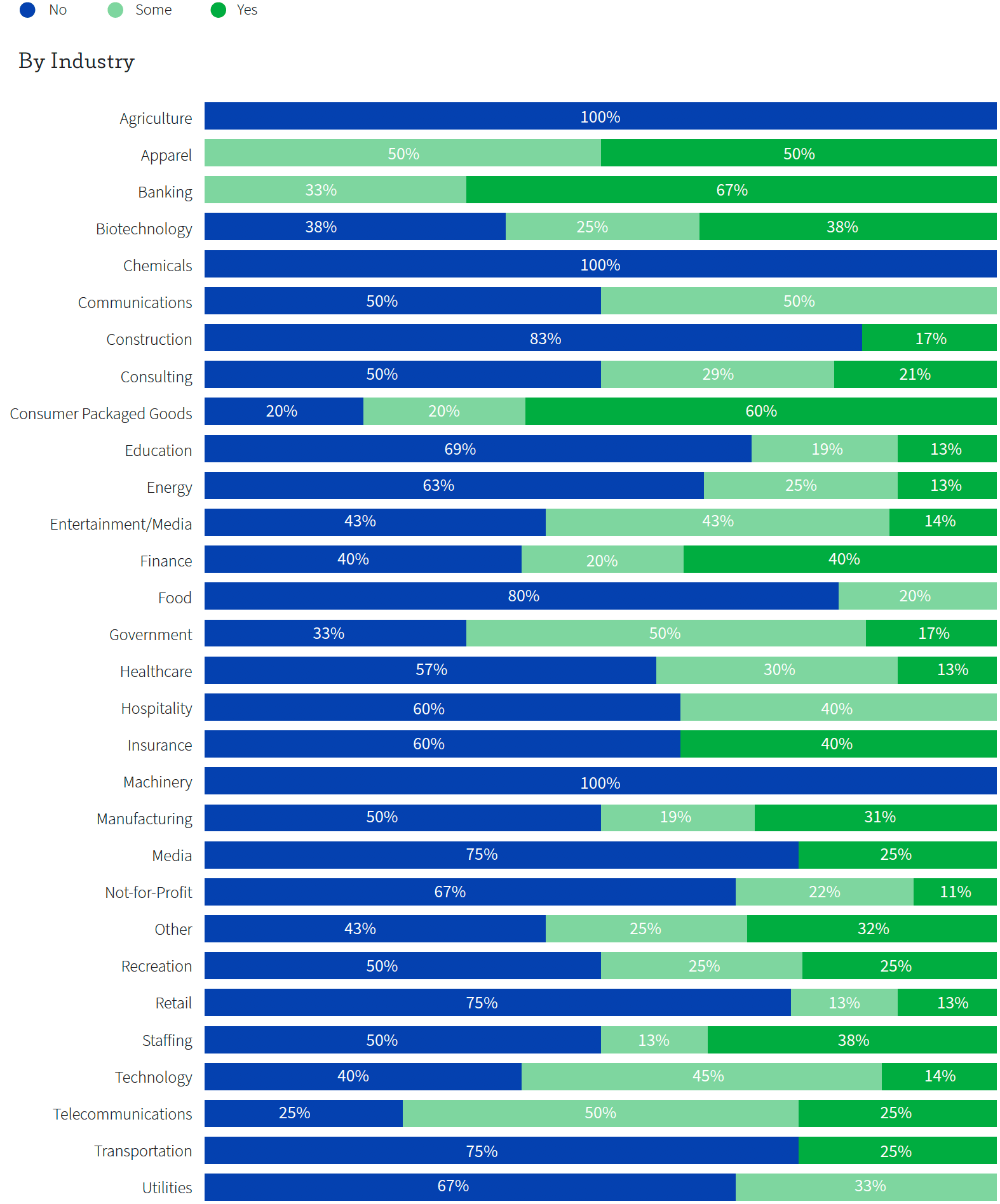

More than half of participants said their companies have either set specific goals or are in the process of setting their diversity targets. But even companies that have set goals don’t always conduct research to ensure that their targets are realistic based on their region and industry.
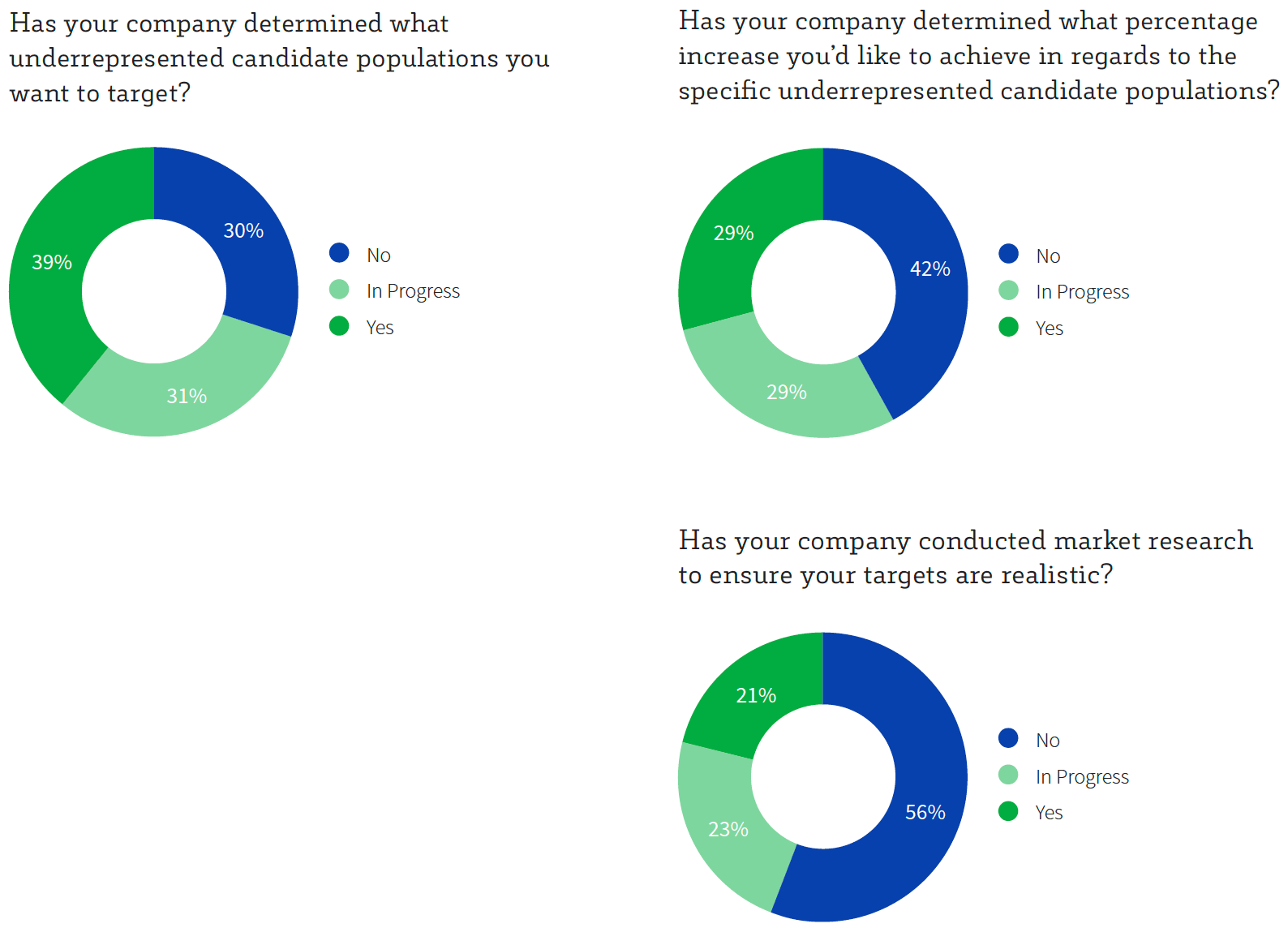
Participants were slightly more likely to have at least some mechanisms in place for governing and measuring progress toward diversity hiring goals than for setting those goals.
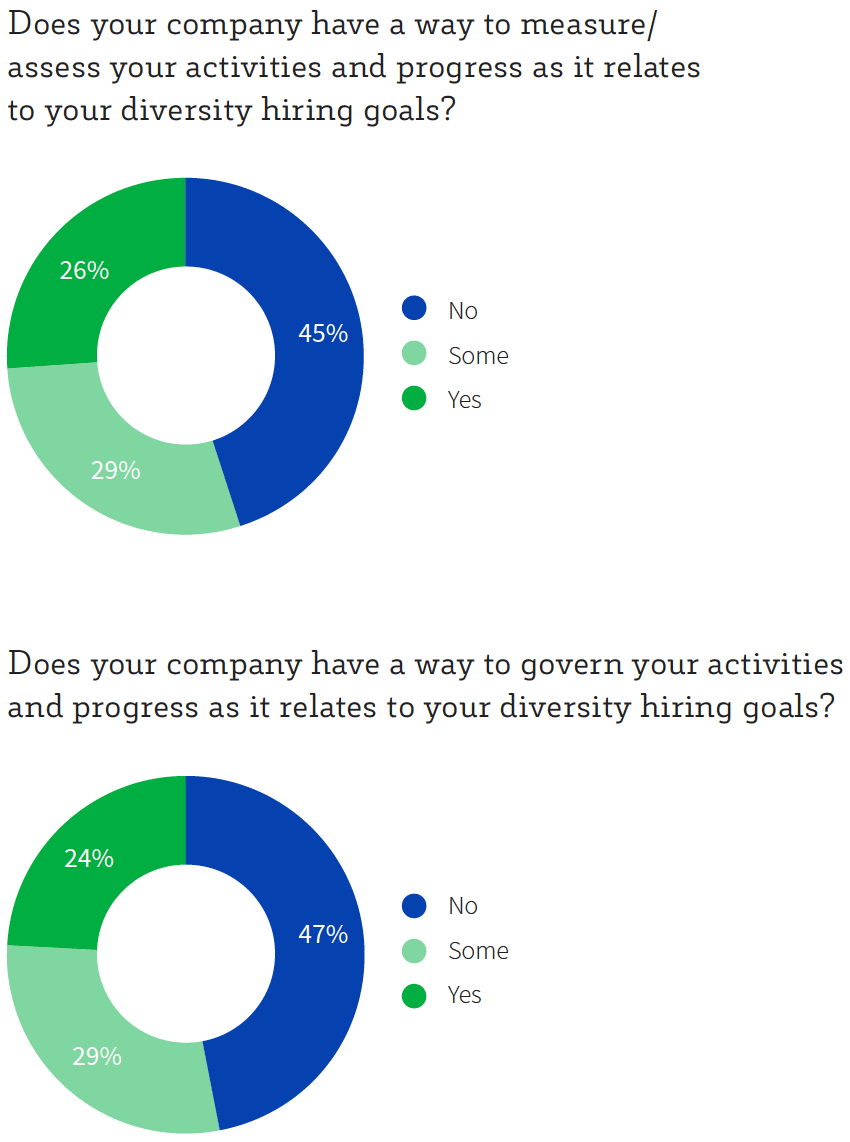
The data suggests that organizations are building the right infrastructure to create and sustain progress toward diversity hiring goals, but they may not have an overarching strategic plan in place yet.
Companies that have an infrastructure for governance and metrics in place can make big gains just by adding specific diversity hiring goals.
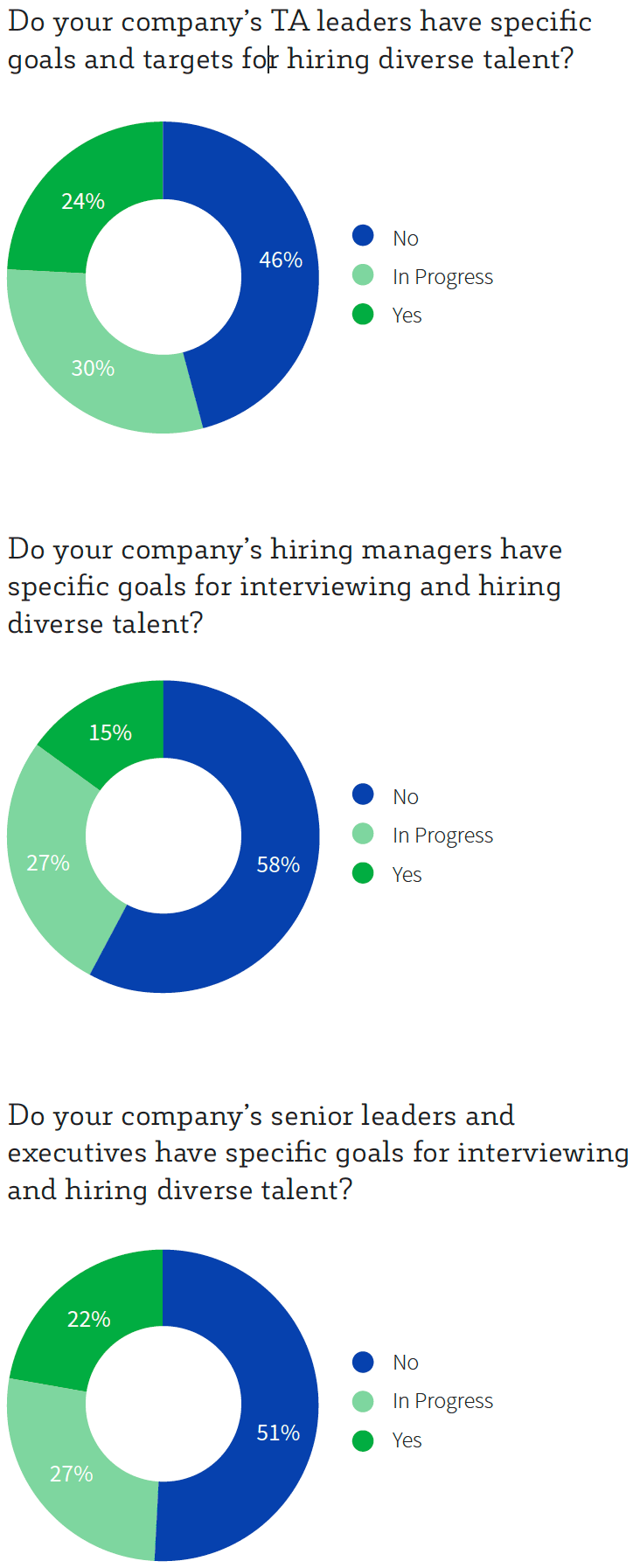
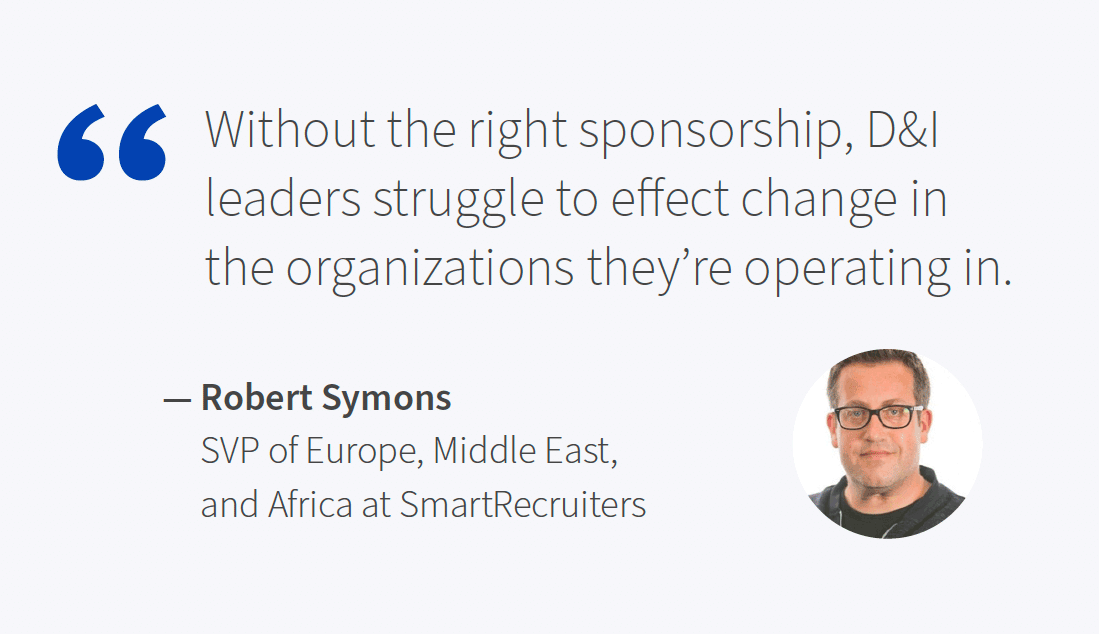
Participants did report making progress toward concrete diversity hiring plans. When asked whether they have specific goals and targets for hiring diverse talent, nearly a third noted being “in progress” toward incorporating specific diversity hiring goals for talent acquisition leaders, hiring managers, and senior leaders and executives.
Senior-level sponsorship for diversity hiring strategies and processes elevates the responsibility for fostering a diverse and inclusive workforce at all levels. “It needs to have senior-level sponsorship,” Symons says. “Without the right sponsorship, D&I leaders struggle to effect change in the organizations they’re operating in — despite doing a really good job in terms of quality, focus, and building awareness.”
The data demonstrate opportunities to develop better processes, governance, and metrics to keep your diversity hiring goals moving forward.
Setting the Strategy From the C-Suite
The HR consultants at Leapgen devote their professional lives to helping enterprise organizations incorporate technology to hire and support their workforces. But internally, the Leapgen team relies on SmartRecruiters’ platforms and Diversity Hiring Assessment to review how well they’re supporting their own workforce. Leapgen’s executive leadership team took the assessment together to identify where they were at in terms of the maturity of their thinking and processes.
“We were very honest about where we’re at — and made sure we didn’t give ourselves too much credit in the way we answered some of the questions,” says Jess Von Bank, Leapgen’s Head of Brand Strategy. “We had some eye-opening moments as a leadership team.”

Once the Leapgen leadership team identified opportunities in their diversity hiring processes, they developed a strategy for addressing them. They started with low-effort actions that would produce the biggest impact. “It’s not that we weren’t wanting to put effort in,” Von Bank says. “It was, ‘What can we do now that’s easy and creates an immediate difference?’” Some of these action items included improving their Diversity Brand Equity by adding inclusion statements to the careers website and making it easier for candidates to request an accommodation ahead of an interview.
Von Bank and the rest of Leapgen’s leadership team prioritized bigger initiatives, too. But, knowing these would require more effort, they set a realistic timeline and action items for completing them. One of those ongoing high-effort, high-impact projects is attracting and hiring a more diverse slate of candidates. “HR is a very homogeneous space,” Von Bank says. “We had a lengthy conversation around, ‘How do we actually attract more diversity to a homogenous professional function?’”
Part of their ongoing diversity hiring strategy is to improve their candidate experience to make diverse candidates feel more welcome and to invite them to participate in changing the tides.
Action Items
Assign executives and senior leaders specific goals for building a pipeline of diverse talent.
Report and monitor your company’s diversity hiring goals at the executive level.
Create and execute a dedicated communication strategy to actively engage your talent community using customized content that offers value to their overall interests.